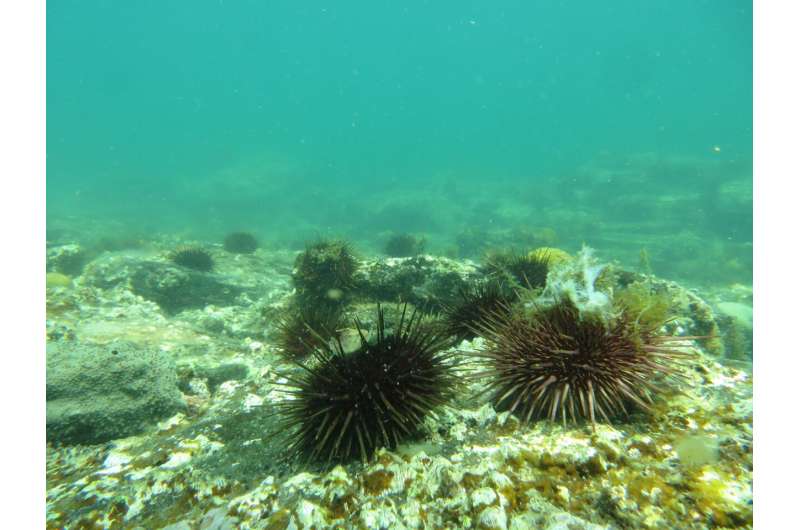
Restoring underwater kelp forests by culling overgrazing sea urchins could yield significant financial and ecological benefits, according to a recent study conducted by researchers at RMIT University. The study, published in Ecosystem Services, highlights the potential for improved water quality, enhanced fisheries, and increased carbon sequestration in southern Australia.
Kelp forests play a crucial role in marine ecosystems by providing shelter and food for numerous species, while also removing pollutants such as nitrogen and phosphorus from the water. However, these vital underwater habitats have been under threat due to the unsustainable population levels of sea urchins that feed on the kelp. The situation is particularly dire in southern Australia, where kelp cover in Victoria’s Port Phillip Bay has decreased by 59–98% over the past four decades.
Economic and Environmental Impact
Led by Dr. Paul Carnell, a senior lecturer at RMIT’s Centre for Nature Positive Solutions, the study modeled the costs and benefits of urchin culling at various sites in Port Phillip Bay. The research took into account factors such as urchin density, dive depth, travel time, and kelp’s potential to enhance nitrogen storage. The findings suggest that a targeted investment of AU$50 million in urchin culling and kelp restoration could generate up to AU$92 million in economic benefits.
“Managing the sea urchin population is a practical step we can take to ensure the health of our waterways, which are crucial to local ecosystems, tourism, and food security,” said Dr. Carnell. “Now we have the figures to show this is also a smart economic investment.”
The AU$50 million investment would primarily fund commercial divers to remove sea urchins and support the cultivation and deployment of kelp to restore reefs. This initiative is expected to create jobs in these sectors, with most of the AU$92 million in benefits derived from the value of removing nitrogen from Port Phillip Bay, as well as improvements in recreational fishing and carbon storage to mitigate climate change.
Scientific and Community Collaboration
The study was a collaborative effort involving RMIT University, Deakin University, The University of Melbourne, University of Western Australia, and Canopy Economics and Policy. The researchers hope their findings will guide future efforts to prioritize kelp restoration on reefs degraded by sea urchin overgrazing.
Dr. Carnell emphasized that while climate change and human activities have also contributed to the decline of kelp forests, managing the overabundant sea urchin populations is a key step in restoring healthy reefs. Previous trials in Port Phillip Bay have demonstrated the effectiveness of this approach.
Historical Context and Future Implications
Historically, kelp forests have been resilient ecosystems, thriving in various oceanic conditions. However, the recent surge in sea urchin populations, exacerbated by warming waters and overfishing of urchin predators, has led to the formation of “urchin barrens”—areas where kelp is decimated, leaving behind barren seafloors.
This development follows a growing recognition of the importance of marine ecosystems in combating climate change. Kelp forests are known to sequester carbon dioxide, and their restoration could play a significant role in global carbon management strategies.
According to experts, the study’s economic modeling provides a compelling case for investment in marine conservation efforts. By demonstrating the potential return on investment, the research underscores the value of integrating ecological restoration with economic planning.
Paul E. Carnell et al, Prioritising investment in kelp forest restoration: A spatially explicit benefit-cost analysis in southern Australia, Ecosystem Services (2025). DOI: 10.1016/j.ecoser.2025.101739
As the world grapples with environmental challenges, the findings of this study offer a hopeful avenue for restoring vital marine habitats while supporting local economies. The move represents a significant step towards sustainable ocean management, with potential implications for similar ecosystems worldwide.




